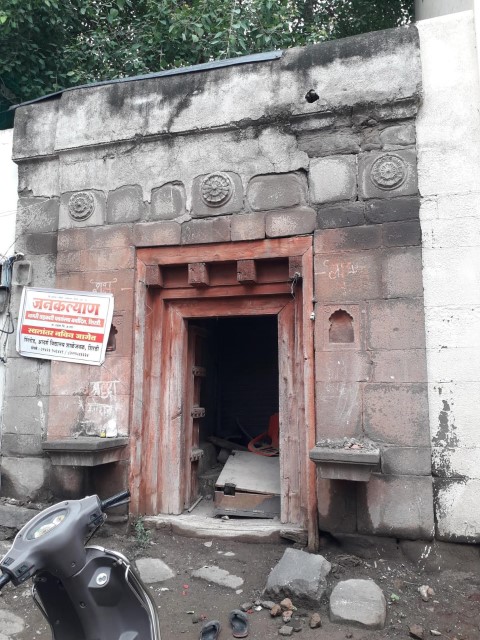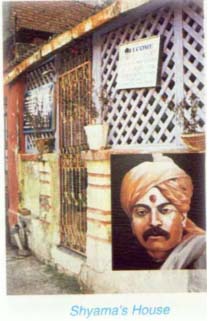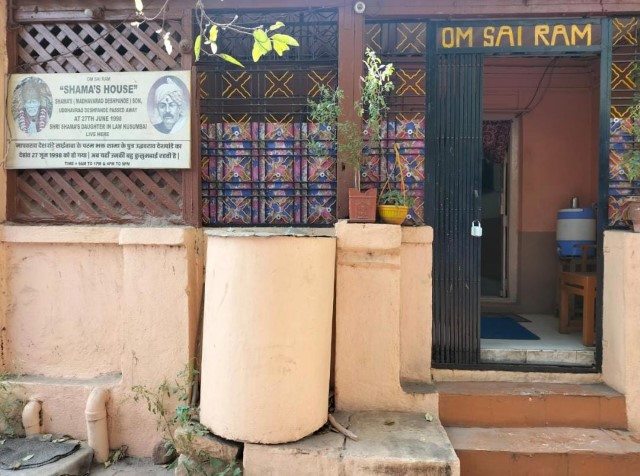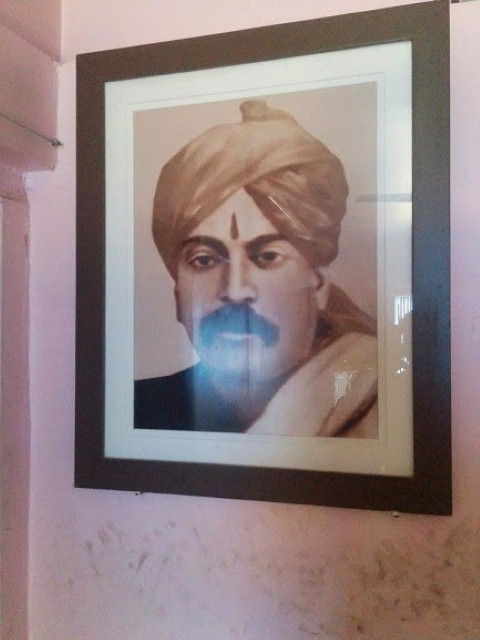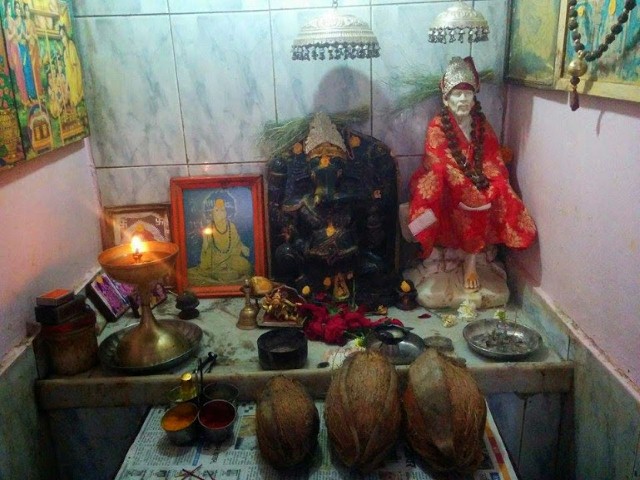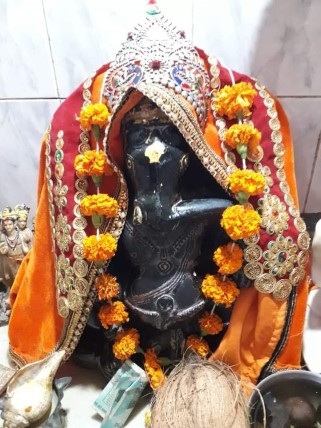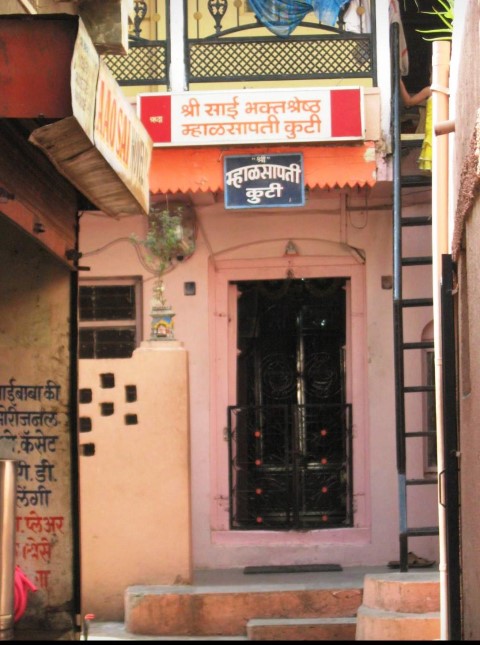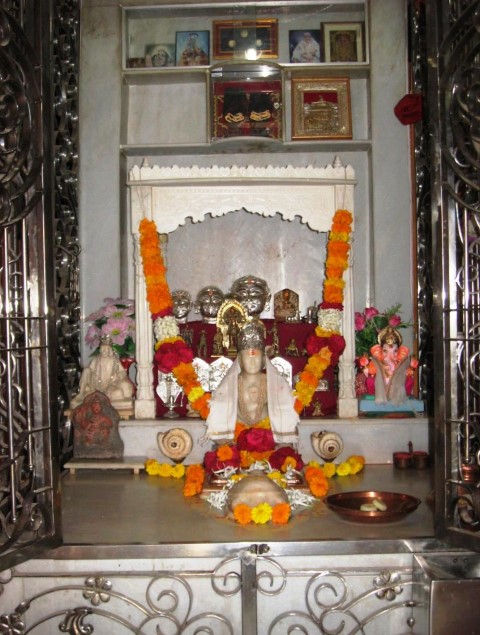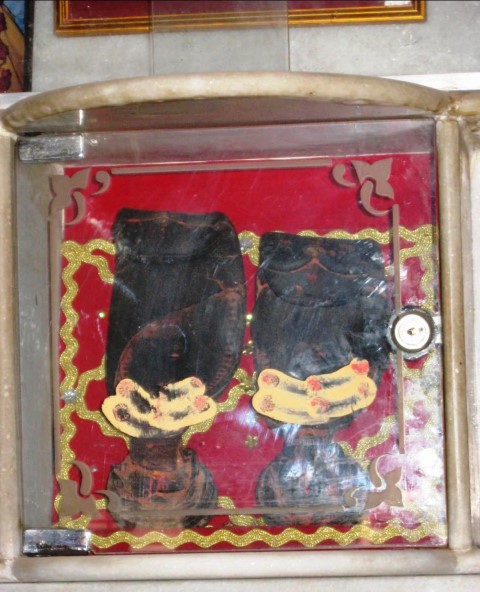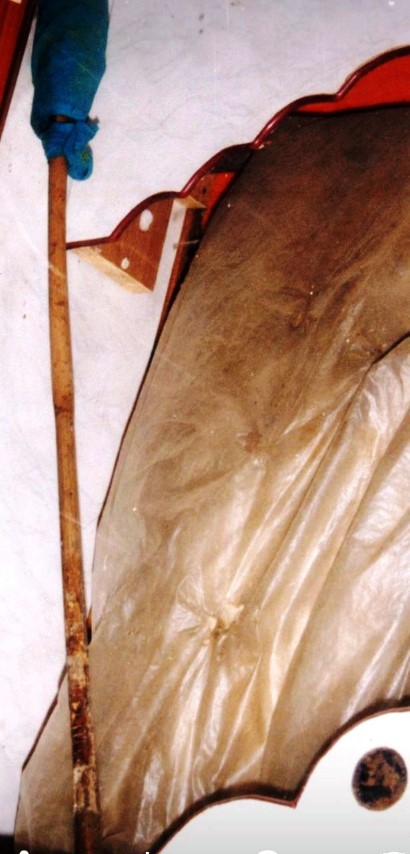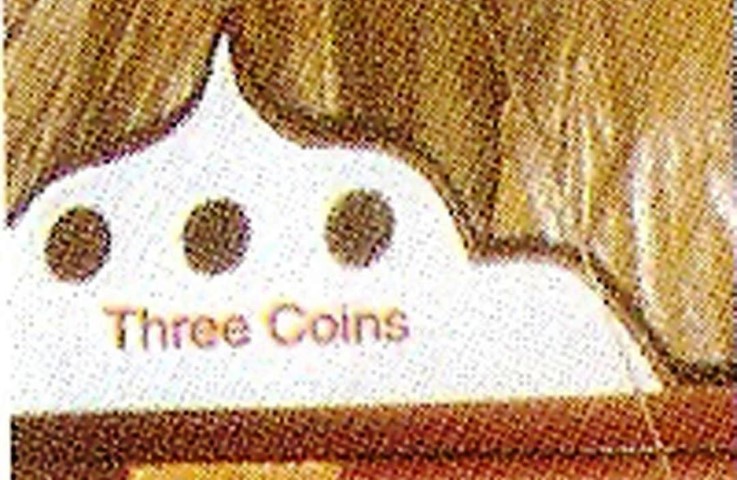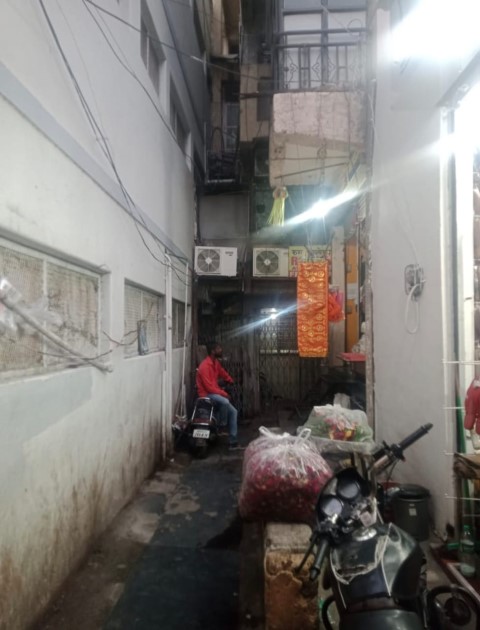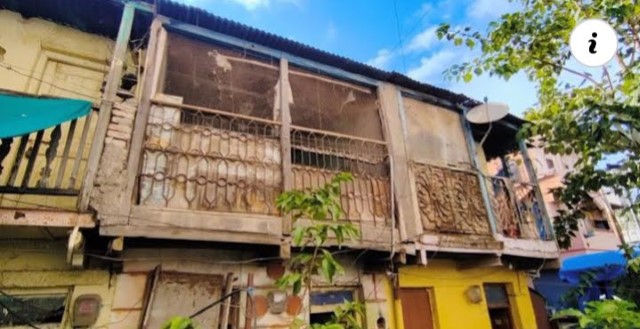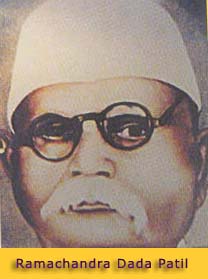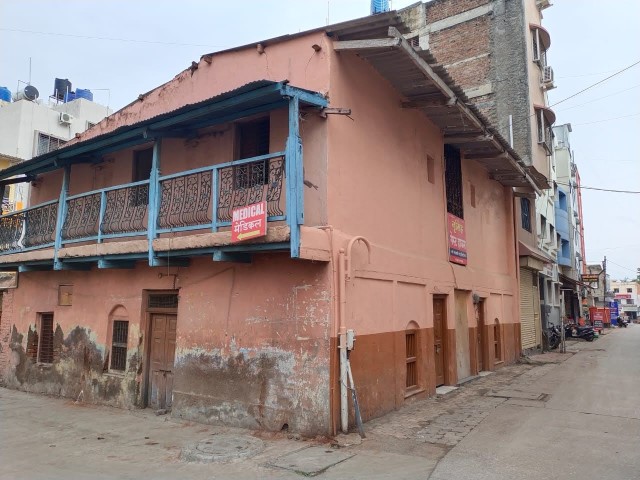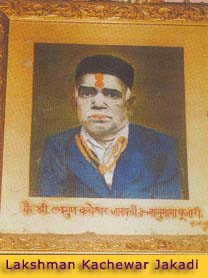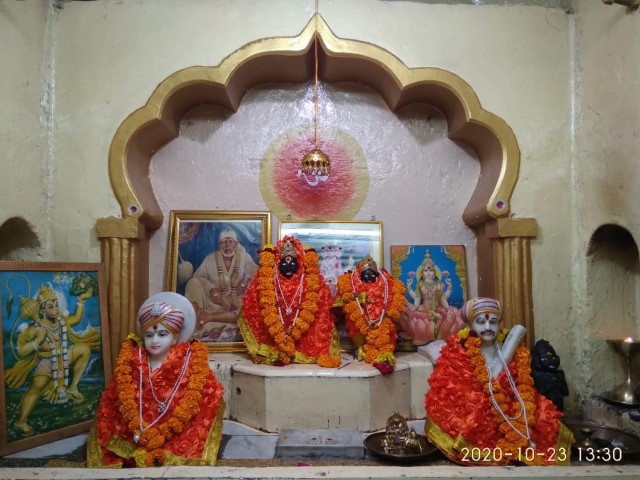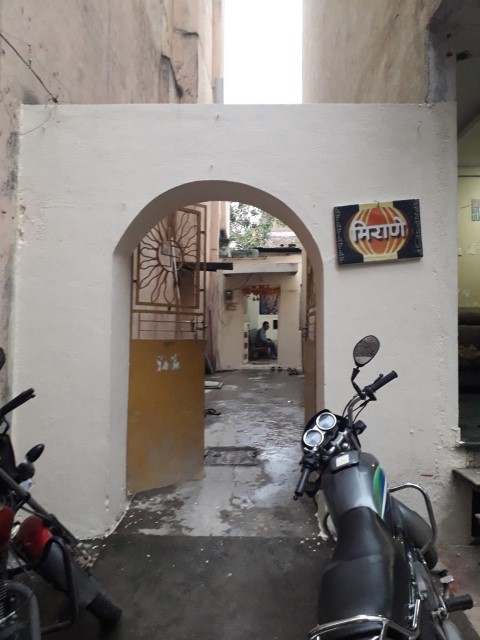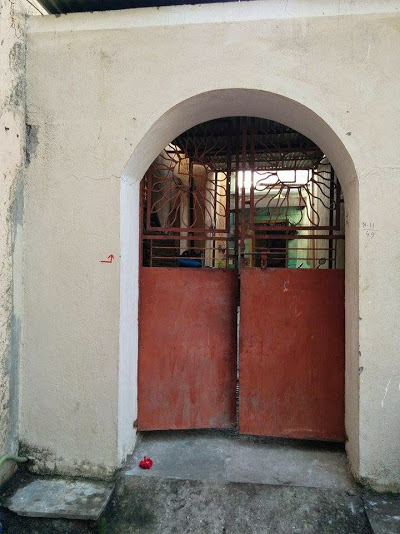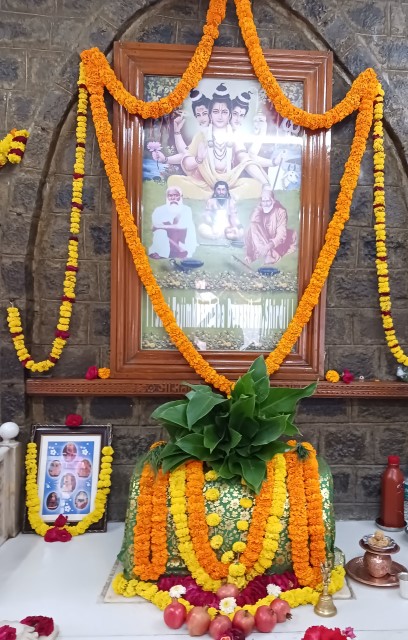HOUSES OF DEVOTEES
LAKSHMI BAI TUKARAM SHINDE'S HOUSE This house is on the left side of the lane that goes from the Dwarakamai to Tajin Khan's Darga. Lakshmi Bai hailed from a village near Yeola. At the tender age of thirteen, she married Tukaram Patil Shinde, and came to Shirdi. She had two sons named Tatya and Nana. Lakshmi Bai Shinde's husband was a Revenue Officer, and the British had conferred the title of "Mulki Patil" (village officer) on him. She was widowed at a very young age, so all the responsibility fell on her young shoulders. Lakshmibai looked after her children, her farmland, and undertook the job of Mulki Patil. Meticulously she collected taxes and deposited it at the office at Ragoba Dada Wada (building's name). The British were very pleased with her dedication and gave her a stipend. Lakshmi Bai was a well-to-do woman. She owned her own home (Ref: Shri.Arun Gaikwad, "Sai Baba Vishesh Ank) Lakshmi Bai was working in the Masjid day and night. Except Bhagat Mhalasapati, Tatya and Lakshmibai, none was allowed to step in the Masjid at night. Once while Baba was sitting in the Masjid with Tatya in the evening, Lakshmibai came and saluted Baba. The latter said to her - "Oh Lakshmi, Iam very hungry." Off she went saying- "Baba, wait a bit, I return immediately with bread." She did return with bread and vegetables and placed the same before Baba. He took it up and gave it to a dog. Lakshmibai then asked - "What is this, Baba, I ran in haste, prepared bread with my own hands for You and You threw it to a dog without eating a morsel of it; You gave me trouble unnecessarily." Baba replied - "Why do you grieve for nothing? The appeasement of the dog's hunger is the same as Mine. The dog has got a soul; the creatures may be different, but the hunger of all is the same, though some speak and others are dumb. Know for certain, that he who feeds the hungry, really serves Me with food. Regard this as an exiomatic Truth." This is a ordinary incident but Baba thereby propounded a great spiritual truth and showed its practical application in daily life without hurting anybody's feelings. From this time onward Lakshmibai began to offer Him daily bread and milk with love and devotion. Baba accepted and ate it appreciatingly. He took a part of this and sent the remainder with Lakshmibai to Radha- Krishna-Mai who always relished and ate Baba's remnant prasad. This bread-story should not be considered as a digression; it shows, how Sai Baba pervaded all the creatures and and transcended them. He is omnipresent, birthless, deathless and immortal.(Ref: Shri Sai Satcharitra Chapter 42). After this incident Lakshmi Bai often brought Bhakar and milk with which she lovingly fed Baba. Lakshmi Bai’s Statue Inside the house is a small shrine with Lakshmi Bai’s statue, in front of which are the nine coins enclosed in a glass top box. On Vijayadashmi day in the year 1918 before Baba took Mahasamadhi, he put His hand in His pocket and gave her Rs.5/- then Rs.4/- totaling Rs.9/- indicative of nine types of devotion namely Shravana, Kirtana, Smarana, Charana Sevana, Archana, Vandana, Dasya, Sakhya and Atma Nivedana. (Ref: Shri Sai Satcharitra Chapter 21 and Chapter 42).
Another Interpretation of 9 Coins could be as follows: The number 5 could be the "Panch Indiriyas". They are the "Karmendriyas" and there are 5 "Jnanendriyas". These Indriyas are the casue of Joy and Sorrow. The 4 rupees could also mean the "Ego Complex" that is Manas, Buddhi, Aham and Chitta.
If the above mentioned are placed in Baba's hands or lay at His feet, It is "Total Sharanagati" or "Total Surrender". Baba through Lakshmi Bai is teaching us to totally surrender ourselves to Him.
Lakshmi Bai’s Samadhi Lakshmi Bai Shinde took Samadhi on 2nd June 1963. She died peacefully after Shej Aarti. Prior to her demise, she asked her relatives to read aloud Chapter 42 of the holy Shri Sai Satcharitra (Ref: Shri.Arun Gaikwad, Sai Baba Vishesh Ank). The Samadhi of Lakshmi Bai is in front of her home. It is enclosed in a small shrine.
Lakshmi Bai Samadhi Outerview
Lakshmi Bai's Samadhi In 2009, her descendants, had removed the old shrine and Samadhi as they propsed to build a grand shrine and Samadhi. Lakshmi Bai Shinde's descendants are still living in that house. Location link to Lakshmi Bai Shinde's House is as follows: https://maps.app.goo.gl/wxVJQ4tx7HRaqwV97 This house is situated to the left and is the corner first house while going from Gurusthan to Sevadham. At the corner is a small shrine with Baba’s Padukas, commemorating the place where Baba rested while going to Lendi Bagh daily. Balaji came to Shirdi in 1912 with his parents. Both mother and father dreamt of Baba. The father in the dream was summoned to Shirdi. While the mother dreamt that Baba asked her for 50 paisa and a piece of cloth. Hence both of them decided to go to Shirdi. They came from Korallah to Rahata from where Tatya’s Munim brought them to Shirdi. Baba abused and beat Balaji and he was often afraid of Baba. But Dixit allayed his fears saying it was a blessing in disguise. Thus they stayed on in Shirdi. He played the Clarion at Aarti and for Baba many times. He carried Mahalsapathi (after he became blind) on his back to and from his house whenever Baba called him. Most importantly from the point of view of Sai Devotees is that he had the waist cloth (Langoti) of Baba which was removed during his last bath after Baba took Mahasamadhi. This Langoti was worshipped by this family.
Langoti given by Shri Sai Baba The descendants have sold the house. Hence, at present a commercial complex stands in its place.
Baba's Holy Padukas Location link to Balaji Pilaji Gurav's ancestral house is as follows: https://goo.gl/maps/rHVdAjVC5WbqxUND6 This house is called as Shinde Wada where Bhagoji Shinde stayed. He was the personal companion and Sevak of Baba. Outwardly he looked unfortunate because of leprosy. He was indeed very fortunate to do Seva and be with Baba constantly. Baba once saved him from death due to high fever, but arrested his leprosy, not curing it completely. He carried the umbrella for Baba while going to and from Lendi Bagh. He messaged with Ghee and put medicated green leaves on Baba’s burnt hand daily till Baba’s Mahasamadhi (Refer Sai Satcharitra Chapter 7). The location link to Bhagoji Shinde Wada is as follows: https://goo.gl/maps/d4TbHUjNwy7CmJei9
This house is situated towards the right bylane while going from Dwarakamai to the Bazaar. Shyama was “The Nandi to Bhola Baba”. He was born in Nimon and came to Shirdi at the age of two years along with his parents and stayed in this house till his Mahasamadhi. Mention is made in Sai Satcharitra when Baba asked Dhabolkar to go to Shyama’s house and take Dakshina from him and sit and chitchat for a while. Shyama came out of the inner room and told Dhabolkar to be seated, as he was about to do Puja. So saying he went into the inner room. Dhabolkar sat on the Verandah and waited till he finished the Puja. Then Shyama came out and told him the beautiful story of Radha Bai Deshmukh (Refer Sai Satcharitra Chapter 18 and 19). This house is very sacred as Baba gave him various books to keep and read. There is a statue of Ganapati towards the right hand corner in the main room and it is said that this Ganapati was given by Baba. There are some original photographs of Baba (going to Lendi Bagh and Baba sitting with Shyama to his left and Mahalsapathi to his right). After Shyama, this house was looked after by his son Udhav Rao Deshpande who breathed his last on 27th June 1998. Udhav Rao stated that he was a young lad before Baba’s Mahasamadhi and often he would play with Baba. Baba loved children a lot, and he spent many evenings playing with Baba. Once Shyama asked Baba “What would happen to this child?”. It is stated that Baba said “He will grow up in the Masjid and that there will be no dearth of funds for his livelihood”.The widow of Udhav Rao Smt.Kusuma Bai Deshpande used to looks after the ancestral house. Smt.Kusuma Bai Deshpande merged in the lotus feet of Sai Baba at 6:00 PM on Monday, 2nd October in the year 2023. It was Sankashta Chaturthi day as well. Location link to Shyama's house is as follows: https://maps.app.goo.gl/98WB1cHDHky8Xe26A
Photo of Shyama in his Ancestral House
Pooja Room at Shyama's Ancestral Home
Ganapati Idol given by Sai Baba Mahalsapathi’s house is situated in a narrow lane leading from the Chavadi to Tajim Khan’s Darga. At the Darga, it one turns left and walks a few yards, the house is to the right in a narrow lane. Mahalsapathi was the Pujari of the Khandoba Mandir. He was a staunch devotee of Baba and spent most of his time with Baba. He was fortunate to sleep in the Dwarakamai along with Baba and Tatya. Baba gave him Sadgati on 6th Tuesday of Bhadrapada Masa of 1922 and his Samadhi was made in his house itself.
The following sacred articles were given by Baba to Mahalsapathi.
This house is a place of pilgrimage because of the sacred articles given by Baba and also because of the presence of Mahalsapathi’s Samadhi. Mahalsapathi was really a true devotee of Baba and although he was really very poor he did not deviate from his spiritual path. He adhered to Baba’s advice of not accepting money or gifts from anyone. Sai Devotees should be very grateful to Mahalsapathi for guarding Baba’s body when he took “72 Hours Samadhi” during the Margashirsha Masa (Refer Sai Satcharitra Chapters 43 and 44). His descendants have preserved and displayed these articles very nicely and the devotees visiting Shirdi can have darshan of the same. The location link to Mahalsapati's House is as follows: https://maps.app.goo.gl/aaJkBhL7C75XdGmr5 This house is situated in front of the Vittal Mandir. It is in the narrow line going from Pilaji Gurav’s home to Seva Dham. The house has an “OM” inscribed above the entrance.
Tukaram Sutar's Ancestral Home in Shirdi
Sutar Ancestral Home in Shirdi His surname was Bhalerao and he was a carpenter or Sutar by profession. Hence Baba used to call him as “Sutar” and rest of the devotees also followed suit and the surname continued. Tukaram had two more brothers namely Kondaji and Gabaji. Baba loved the three brothers a great deal, but Tukaram was very dear to him. The three brothers were instrumental in making the Dwarakamai as we know it today. They provided the greatest help. All the wood work of Dwarakamai Masjid was done by them. After the renovation the management of the Masjid continued with them for many years. Till Baba’s Mahasamadhi, Tukaram undertook the sweeping of the Masjid. He took care of Baba’s needs like heating of water, and giving it to him to wash his face and mouth. Baba would not allow any other person to do this as he loved him a lot. Kondaji did not have any children. His brother Gabaji had two wives Parvatibai and Saibai. He had one son named Gangadhar from Saibai. Tukaram had also had two wives namely Sundrabai and Geetabai. He had four sons. The descendants of Tukaram used to live in this home till 2009. Now they have built a house and moved to an area behind Sai Nagar. The most important thing that this family did was to make a staff about 30’ long. This staff is a bamboo staff that they bring from a place called Madhi, every year. About a month before Ram Navami, this staff is brought to their home. It is cleaned and numerous coats of varnish are applied on it. In Marathi it is called “Kathi” and a ritualistic worship of it is performed. This staff is used in the Ram Navami celebrations of “Changing of the Flags ceremony”. Every year Ram Navami day the flags arrive from Damu Anna’s home at Ahmednagar. Another flag comes from Nimonkar home at Pune. Upon reaching Shirdi the flags are taken to the Samadhi Mandir, and the Samadhi is draped with them. Then the noon Aarti takes place. At about 3:30 PM they are taken to the Sutar home and puja is performed. When the flags are taken from the Samadhi Mandir to the Sutar house they are carried on a silver platter. In the Sutar home puja is performed. After the Aarti the flags are hoisted on this staff by the descendants of Tukaram Sutar. This is a great honor bestowed on the family by the Sansthan. Then the flags on the staff are taken throughout the village in procession. This is a joyous occasion and there is music provided by a local band. Many devotees dance all the way on the route of the procession. After exiting the Sutar home it is taken to the area in front of the Gurav home. There it is joined by another ochre colored flag that is provided by the Sansthan. This flag is finally fixed to the staff, on the grill of the Dwarakamai. Then the procession proceeds to gate number 4 and makes its way to the Gurusthan, then goes to the area in front of the Hanuman Mandir. Here it is joined by the Rath or Chariot. Then the flags lead the procession along the Palkhi route and through the village. Finally, each flag is fixed on a small staff and hoisted atop the Dwarakamai Masjid. Tukaram’s descendants live in Shirdi and have continued the family tradition of doing dedicated service. Tukaram’s daughter-in-law Parvatibai, wife of his third son has been performing the valuable service of sieving the Udi. It is indeed a difficult task as the Udi, when sieved flies into the eyes, and nose. It is inhaled, during the duration of the sieving. It’s Baba’s grace that prevents this lady from having serious eye and lung disease. Another difficulty that she faces is she cannot turn the fan on no matter how hot it is, as the Udi fly all over the place. As the crowd of devotees who throng to Shirdi has increased by leaps and bounds numerous sacks of Udi are sieved every day. Parvatibai started sieving the Udi from a very young age. At that time the Sansthan gave a very small amount as Dakshina. Now she is about 70 year old and has retired and her daughter-in-law Rukmani is doing this service. Rukmani is given 70 rupees per sack of Udi sieved. We Sai Devotees should be grateful to these ladies. It is because of their dedication that we devotees are getting fine form of Udi Powder. The Sansthan used to send a platter of food to this home after the offering of Baba’s Bhog (a meal offering). With the passage of time this practice was discontinued by the Sansthan. However the descendants of these families consider it a great honor and so they go and collect the bhog themselves. The family is indeed fortunate to receive the Bhog that is offered to Saibaba as Naivedya. Location Link to Sutar's House is as follows: https://maps.app.goo.gl/yAKrVNMmHZUhy3g9A RAMACHANDRA DADA PATIL'S HOUSE Ramachandra Dada Patil owned and lived in the building which is called the Narashing Lodge. It comes on the left side of the Palkhi Road where it takes a curve while going towards Shinde Wada. Ramachandra Patil was born in Shirdi. He was the only son of Radhabai and Dada Kote Patil. Ramachandra Patil had three Sisters. He was born into affluence. His ancestral property spread far and wide in Shirdi and neighboring villages which yielded many types of grain and sugar cane. Hence he used to supervise many labourers.
Ramachandra Patil was a very bright student. He studied up to 7th Standard in Marathi Medium. But he was interested in law and the legal system. He was responsible for incorporating the village of Beragaon into Shirdi. Maruti Mandir has two idols of Hanuman; one is for Shirdi and the other one for Beragaon. It is said that in those days the boundary of Shirdi was up to the Chavadi beyond which was Beragaon. At a very young age of eleven years, Ramachandra Patil started performing Baba’s Seva. In 1916 he was extremely sick and dying of Influenza (Refer Shri Sai Satcharitra, Chapter 42). Baba gave him a vision and said, “Tu gabro nakos, tula pushkal aayuse ahaya” (don’t be afraid, you have a long life ahead of you). Ramachandra Patil was greatly relieved to hear this and he immediately asked about his friend Tatya. Baba however said, “Two years from today Tatya will pass away, but don’t tell this to anyone”. Ramachandra Patil recovered in due course of time. But he could not bear the thought of losing Tatya. As Baba’s words were always true, he confided in Bala Shimpi who was his dear friend. Tatya and Ramachandra Patil were dear friends since childhood and they grew up together. Baba strengthened this bond between them by making them eat out of the same plate daily in the Dwarakamai. Ramachandra Patil was married to Sitabai and since they did not have any children, he married again and had two sons from his second wife. After Baba’s Maha Samadhi the devotees were working the whole night to get the Samadhi ready. Mir Shakar, a body builder of Korhale saw the developments and sought the help of Appaji Kote Patil who was the grandfather of Ramachandra Patil. He convinced him that it was bad, to keep a dead body in the village. This appealed to Appaji and he called a meeting of the villagers and told the villagers his views. Then the villagers agreed to take the body out of Shirdi. Ramachandra Patil heard this and disagreed vehemently saying that Baba’s last wish should be followed and honoured. This enraged Appaji and he told him not to step into his house again. Ramachandra Patil agreed as he was determined to honour Baba’s last wish at any cost. He did not enter his grandfather’s house for almost 12 years although his first wife Sitabai stayed there. Ramachandra was successful in convincing the villagers of Shirdi for Baba’s Maha Samadhi in Shirdi and succeeded in honouring Baba’s last wish. The Body was placed in the Samadhi after a grand procession through the village. On the 13th day Ramachandra Patil arranged for a feast. The devotees distributed Laddus to thousands of devotees. To the Wonderment of devotees even after distributing thousands of Laddus, the same amount of Laddus remained. Hence, the Laddus were distributed for almost 2 months to the devotees who could not attend the Mahasamadhi. We Sai Devotees should be grateful to Ramachandra Patil and Gopal Rao Butti for gifting us the Samadhi and Samadhi Mandir. Ramachandra Patil was a village official of the Shirdi Village Panchayat for 20 years. The Shirdi Nagar Palika has a photograph of Ramachandra Patil hung in their office even today. In addition to his official duty, Ramachandra Patil actively participated in the activities of Shirdi Saibaba Sansthan and was the Joint Secretary of Sansthan for a long time. Ramachandra Patil used to get up early in the morning and have a cup of tea after which he would not eat anything till the Noon Aarti. He attended the Aarti daily and was never sick for a single day. He died at the age of 70. That day he had invited some guests for lunch and they were late. So his family suggested that he should finish his lunch. He replied that he would wait for the noon Aarti. He sat down, as he was feeling giddy. Before they could seek medical help, he quietly and peacefully breathed his last. Ramachandra Patil’s descendants still live in Shirdi. However, they sold his house to Sakharam Shelke along with the rest of his property. The location link to old ancestral house of Ramachandra Dada Patil is as follows: https://goo.gl/maps/YWxVJKCkQKZsPeQj6 Now his descendants live in a small bunglow off the highway near the Shirdi Police Station.
Ancestral House of Ramachandra Dada Kote Patil LAKSHMAN KACHESHWAR JAKADI'S HOUSE Lakshman Kacheshwar Jakadi was addressed by Saibaba as Nanumama and hence the villagers of Shirdi also used to call him as Nanu Pujari. He came to Shirdi in 1914. He started doing Baba’s Aarti as an assistant to Bapu Sahib Jog.
He lived in Sangamner where he had a vivid dream vision. Baba appeared before him and said, “Child are you sleeping? Come to Shirdi as there is a lot of fun there”. That very moment Ratna Parkhi who was related to him on his maternal side arrived in his village. He asked him to accompany him to Shirdi as his assistant. Nanu Mama happily accompanied him and stayed in his home for some time. Nanu Mama earned his livelihood as a tourist guide showing pilgrims the villages surrounding Shirdi and other places of pilgrimage. But the work that he liked most was helping Jog in performing the worship of Baba. After two years of doing voluntary puja of Baba the Sansthan appointed him as the permanent priest. His descendants now live in Hegdewar Nagar which is behind the Nagar Palika Office. His wife’s sister was married into the Ratna Parkhi family so he had a place to stay. Then he shifted to a rented room in the building behind the Samadhi Mandir. His son Digambar became the next priest for performing Baba’s Aarti in the Samadhi Mandir. He bought the home that the descendants are currently living in. This home is behind the Vittal Mandir. Upon entering, the Vittal Mandir to your left there are a flight of steps. On ascending, these steps there are a few houses, where the extended Ratna Parkhi family lives.
Lakshman Ratna Parkhi's Ancestral House
Vittal Mandir maintained by Lakshman Ratna Parkhi's family Lakshman Ratna Parkhi’s ancestors were experts at evaluating precious stones and diamond for the Peshwas. Thus, they were called by the surname Ratna Parkhi. They were Brahmins and Priests by profession. They migrated to Shirdi and made it their home. Lakshman Mama was the village priest and astrologer. Mention is made of him in the Shri Sai Satcharitra. Lakshman Mama was a very orthodox Brahmin and rigid in his ways. He did not approve of Baba’s unorthodox way of living in Shirdi. Once he was extremely sick and his son Bapaji ran to Baba and begged him to save his father. Baba shouted abusive language at him and asked him to go home. Soon Baba’s compassionate heart melted and he went to his home. There he found Lakshman Mama groaning in severe pain. Then he lovingly caressed him, and laid his hand of benediction on his head. At that very moment, he started recovering. This incident had a profound effect on his life and he became an ardent devotee of Baba. Once Bapaji was very sick. All kinds of treatments were given to him, but nothing worked. Ultimately his father ran to Baba for cure. Baba cursed him and shouted violently, a little later Baba went to his home. He laid his hand of benediction on his forehead, and he was cured. This incident further strengthened his faith and devotion in Baba. When Baba took Mahasamadhi on 15th October 1918, Bapaji was with him in the Dwarakamai. Baba sent the anxious and concerned devotees home. Yet a few devotees stayed behind and Bapaji was one of them. His father Lakshman Mama performed the Kakad Aarti to Baba the next day (Refer Shri Sai Satcharitra, Chapter 43). In the early morning that day, Lakshman Mama had a vivid dream in which Baba bade him to come and perform his Kakad Aarti. Indeed he was a true devotee for he did the Aarti unmindful of all the protests and objections of the Maulvis. Baba had asked him in the vision to perform Kakad Aarti so he was adamant to do it. With a great deal of tenderness and reverence, he washed Baba’s feet, and then he performed the Aarti with tears streaming down his cheeks. Then he opened Baba’s closed fist and kept his Dakshina and Tambul and left. His descendants still live in that home in Shirdi and are leading fruitful lives.
If you walk out of the Dwarakamai for about 50 feet across the vacant plot and take the second right lane, and walk further about 50 feet on your left hand side you will see Kashiram Shimpi’s house. The house has a concrete compound wall with an arched iron gate.
Kashiram Shimpi Ancestral House Outerview
Kashiram Shimpi Ancestral House Outerview Kashiram was kind, gentle and a very spiritual person. Mahalsapati, Kashiram and Appa Jagle were like-minded individuals, and were friends. The three of them, looked after the welfare of ascetics and saints who visited Shirdi. Each did whatever was needed, according to their means. Mahalsapati after welcoming Baba in the Khandoba Temple brought him to the village. There Baba met Kashiram Shimpi and Appa Jagle. The three friends became devoted to Baba and took care of his meager needs. Kashiram Shimpi was a cloth merchant. He owned some property and had a stable also. He loved Baba a lot, and stitched a green cap and Kafni for him. This Kafni and cap was found in a bundle when Baba took Mahasamadhi. Kashiram Shimpi used to provide the wood for the Dhuni Maa in Dwarakamai. Every morning he would bring 2 paisa and lay it at Baba’s feet. At that time Baba did not accept any money offerings from the devotees. Baba however accepted the money offered by Kashiram Shimpi, as it was offered with love and devotion. If Baba did not accept the money on any given day Kashiram Shimpi would weep copiously. Later on Kashiram Shimpi started brining the entire amount of cash that he would earn every day and would lay it at Baba’s feet. He asked Baba to take as much of the money that he needed. Gradually the seed of pride took hold of Kashiram Shimpi, and he felt that he was the provider of Baba’s needs. At that moment his financial condition started declining, and Baba’s demands for money offerings started increasing. Finally, he had to tell Baba that he did not have the money. A lesson had to be taught, so Baba asked him to borrow the money. After a while, the creditors refused to give him the money, and then he realized that he was not the provider of Baba’s needs. At that very moment his finances started improving. As he was a cloth merchant he went to different villages and sold bails of cloth. Once while returning from Nawoor Bazaar he was waylaid by dacoits. The dacoits first attacked the carts that were following him. Later they turned their attention on Kashiram Shimpi who was riding a horse. He did not resist, and gave up everything he had except a small bundle. The dacoits got suspicious and thought it contained money or something precious. They attacked him viciously, though wounded Kashiram saw a sword fallen nearby. He picked it up and killed two of the dacoits, but the third dacoit delivered a blow with an axe on his head. Kashiram fell down in a pool of blood. The dacoits thought that they had killed him and left. A saint called Jankidas had advised Kashiram to feed ants daily with Sugar. In the small bundle that he was protecting with his life was actually a packet of Sugar. After sometime he regained consciousness. He asked the people who had come to help, to take him to Shirdi. At Shirdi Baba asked Shama to attend to him and he recovered fully. While Kashiram was being attacked by the dacoits, Baba who was sitting in the Dwarakamai flew into a rage. He used foul abusive language and waved his Satka about. Indeed Baba was warding off the vicious attack of the dacoits, and protecting his devotee. There were many armed dacoits fighting with Kashiram, yet he managed to ward off their attack and stayed alive. The Government of Bombay acknowledged his valour and presented him with a Sword. The villagers called Kashiram, “Shimpi” and so did Baba. Shimpi refers to his cast, and so this surname was used. Now the descendants use the surname “Mirane”. Shantaram Shyam Mirane, descendant of Kashiram Shimpi was a trustee of Shri Saibaba Sansthan Trust a few years ago. He was responsible for bringing back the old tradition of doing Samoohik Parayan of Shri Sai Satchritra. After the completion of Samoohik Parayan there is Kirtan or singing the praises of the Lord, and devotional songs. Following this, the devotees talk about their experiences and miracles that occurred in their lives, or during the reading. Kashiram Shimpi passed away some years later in Shake 1830, on Chaitra Masa Ekadashi. His descendants are still living in that very house. They are devoted to Baba, and are carrying on his legacy of doing Seva.
Just opposite to Mahalsapati's Samadhi House about twenty meters away is Tajim Khan's Dargah. The location link to Tajim Khan's Dargah is as follows: https://maps.app.goo.gl/vDVmuSNU8inqxDh37
|
(Source: Ambrosia in Shirdi, Baba’s Anurag and Baba’s Gurukul by Vinny Chitluri. Photo Courtesy:Shri.Sairaj Gaikwad Patil, Shirdi, Shri.J.Subramanya, Shri.Nagaraj Anvekar, Bangalore, Shri.Pranav, Nirmal District, Telangana and Shri.Jignesh C.Rajput, Surat) |
|---|
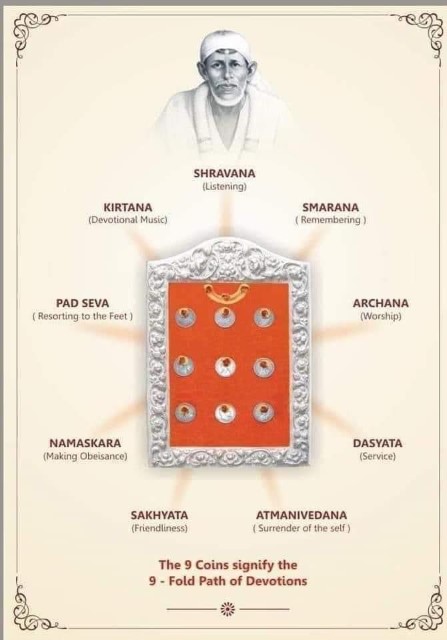
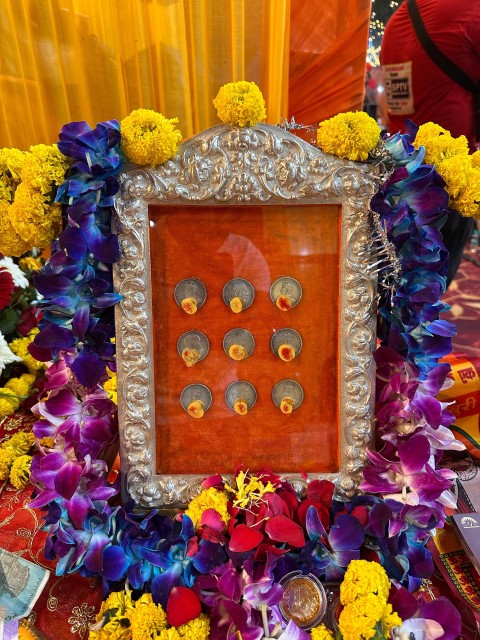
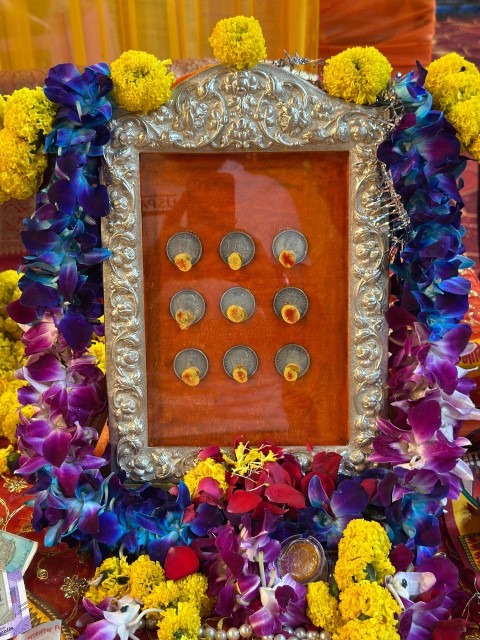

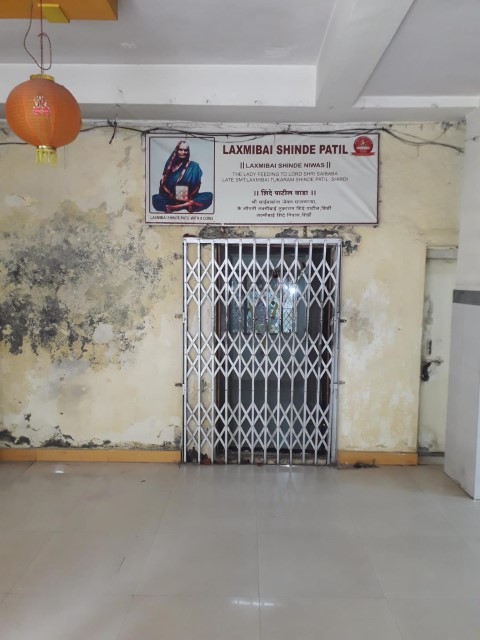
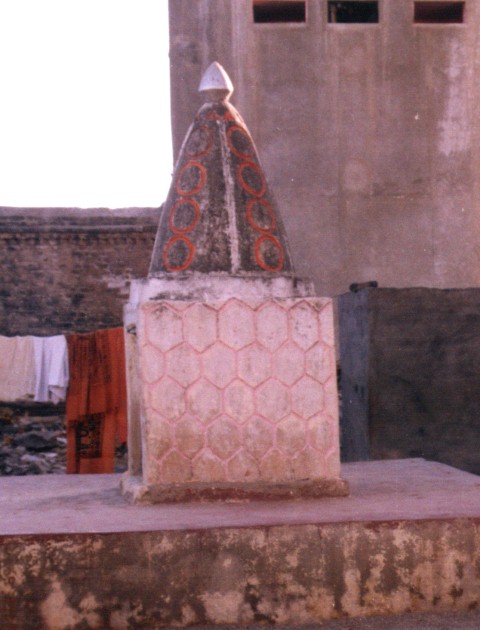
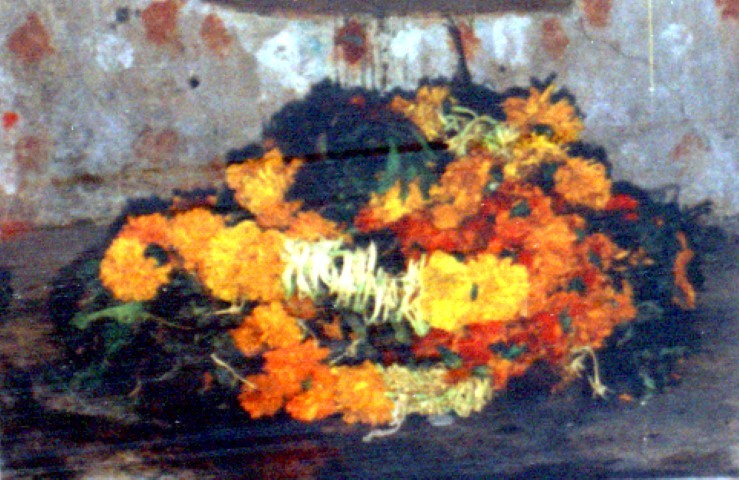
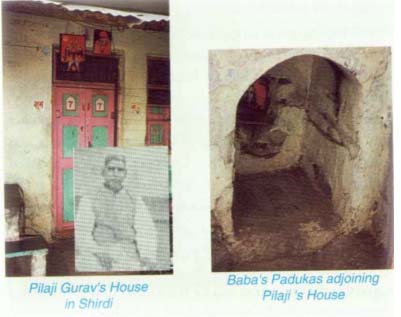
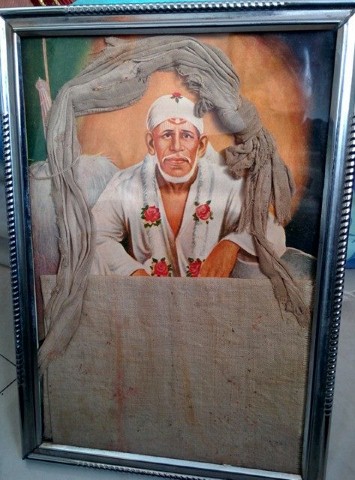
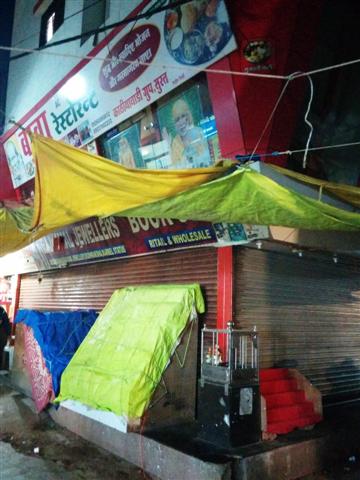
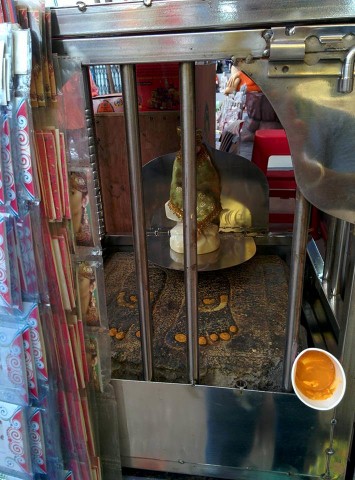
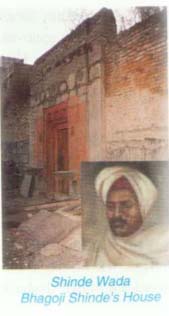 '
'